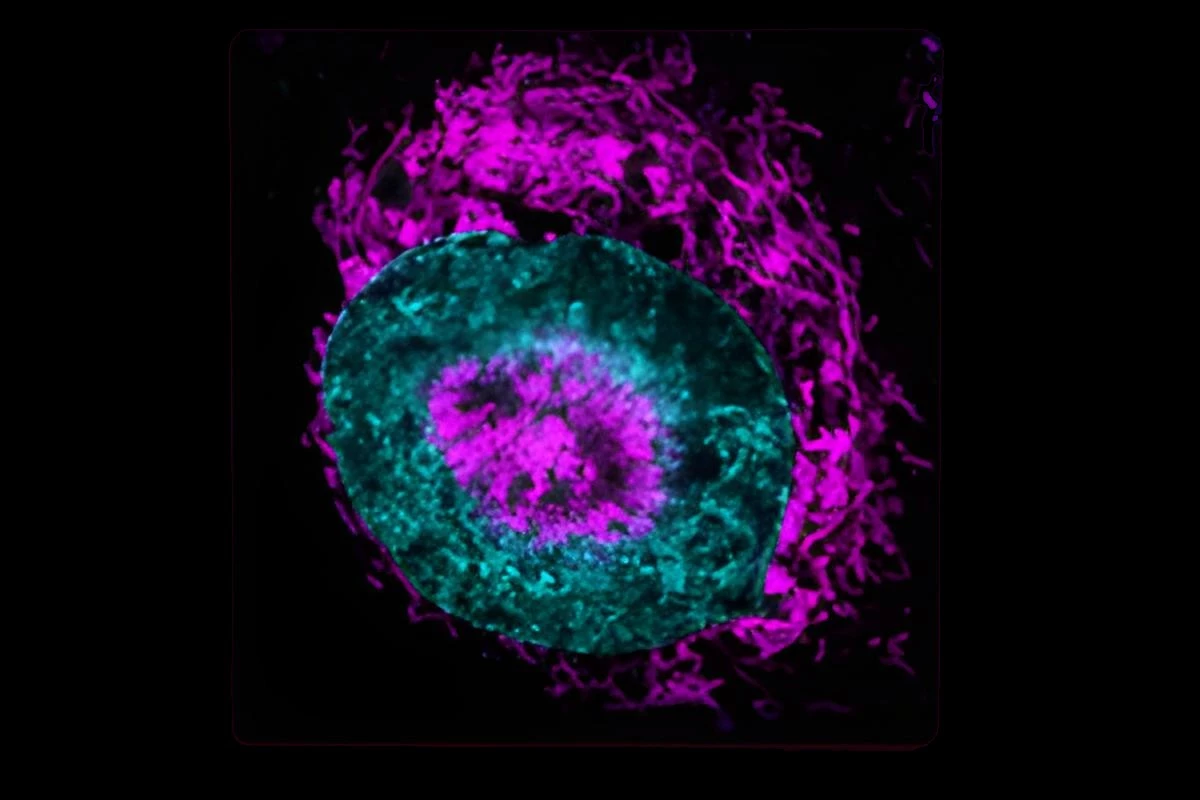Researchers have discovered a secret super power that cancer cells exhibit while squeezing themselves through our bodies. The finding now gives scientists the chance to discover the kryptonite that will sap them of this extra boost of strength.
In the war against cancer, enemy intel is extremely valuable. So researchers at Barcelona's Centre for Genomic Regulation (CGR) decided to put the squeeze to the disease-causing cells – literally. Using a microscope that has the ability to squeeze cells to just three microns wide, they found out that living cancer cells have a surprising reaction when compressed.
Using the microscope and a fluorescent dye, they were able to see that the mitochondria in squeezed HeLA cancer cells zip to the surface of the cells' nuclei where they begin pumping out copious amounts of ATP, the fuel that cells run on. The cells actually dimpled inward as the mitochondria migrated, forming a halo around the nucleus. The researchers named the phenomenon "NAM" for nucleus-associated mitochondria.
“It forces us to rethink the role of mitochondria in the human body," says Dr. Sara Sdelci, co-corresponding author of the study, which has been published in the journal Nature Communications. "They aren’t these static batteries powering our cells, but more like agile first responders that can be summoned in emergency situations when cells are literally pressed to the limit.”
Further research determined that the power surge helped the cancer cells repair damage to DNA that happens when the cells are squeezed, such as when they float through tight blood vessels or migrate through a tumor. This repair boost, in turn, helps them survive.
When looking at breast-tumor biopsies from 17 women, the scientists found that NAM halos were present to a greater degree at tumor borders than in their tightly-wound cores. While that might sound counterintuitive, co-first study author Ritobrata Ghose helped clear it up for us.
"While the tumor core is indeed densely packed, it is relatively stable," he told us. "In contrast, the invasive front – the outer edge where the tumor pushes into surrounding tissue – is a more dynamic zone. Here, cells face complex mechanical challenges, such as navigating through the extracellular matrix and breaching blood vessel walls to metastasize, and require rapid adaptation systems in place, to ensure survival and fitness on the go."
The researchers found that the NAM halos are aided by a mesh-like net created inside the cells consisting of actin filaments, which hold the mitochondria in place. When they treated the cells with a drug that destroys actin, the NAM effect collapsed and the ATP surge disappeared. This, they say, could offer a pathway to combating cancer.
Additionally, the team points out that their discovery likely applies to all cells – not just cancer cells.
“Wherever cells are under pressure, a nuclear energy boost is likely safeguarding the integrity of the genome,” says Sara Sdelci, another co-corresponding author of the study. “It’s a completely new layer of regulation in cell biology, marking a fundamental shift in our understanding of how cells survive intense periods of physical stress.”
Source: Center for Genomic Regulation




